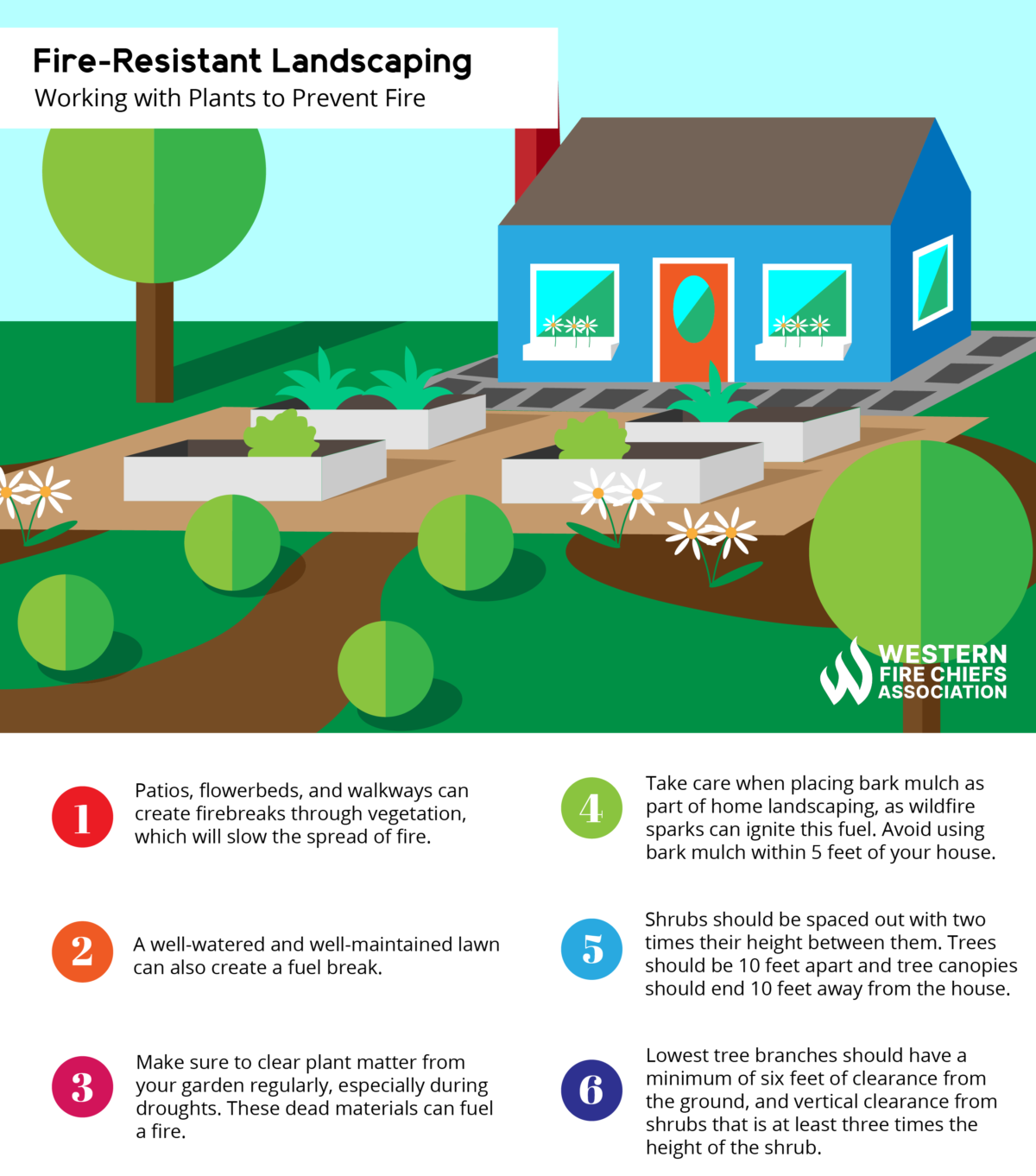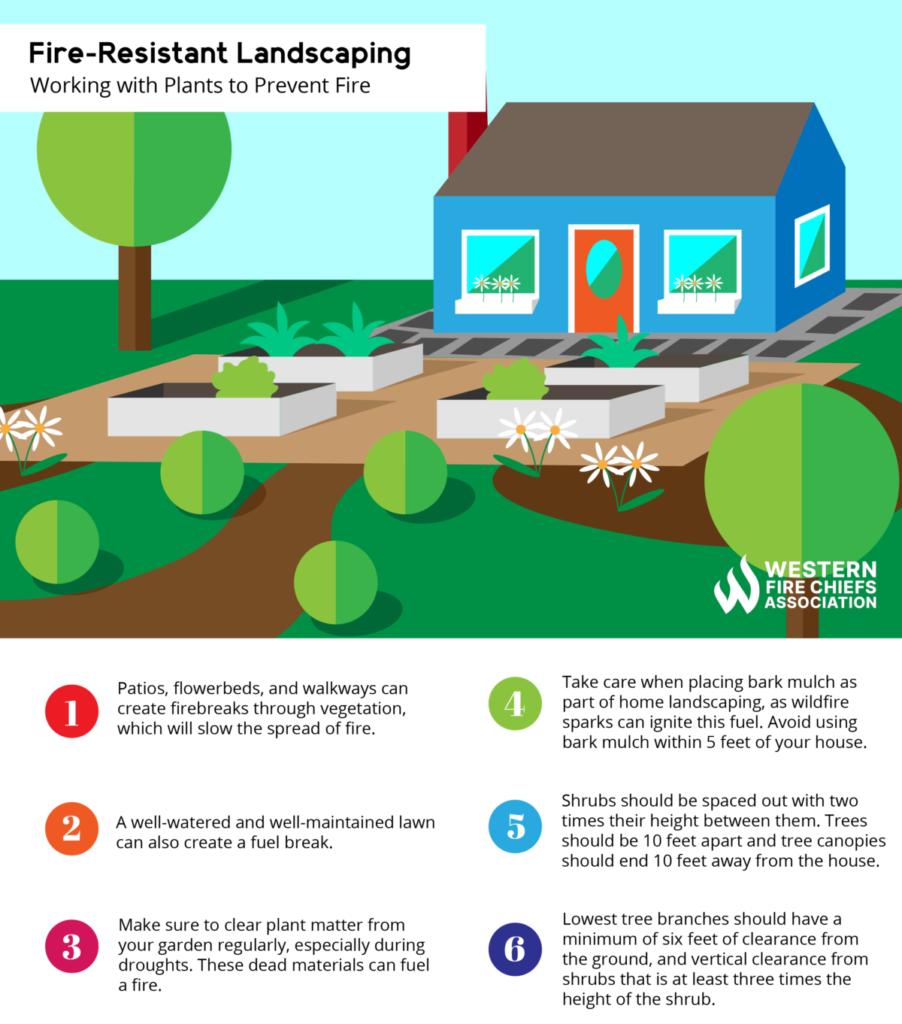Fire Pit Safety Tips
Stay safe around the campfire with tips from the Western Fire Chiefs Association. Learn essential precautions and practices for a worry-free outdoor campfire.
Learn about the characteristics that help make some plants more fire resistant than others with expert guidance from the Western Fire Chiefs Association (WFCA).
Published:February 7, 2023
Edited:April 8, 2024

Learn about the characteristics that help make some plants more fire-resistant than others with expert guidance from the Western Fire Chiefs Association (WFCA).
Plants can survive in almost every environment on Earth. Some have even adapted to survive the devastating effects of wildfire. Incorporating these hearty, fire-resistant plants into your own garden can help reduce wildfire risk on your property. These plants can also slow the spread of fire if it threatens your house.
The area up to 200 feet around your house is a defensible space that can be cultivated to protect your home. Maintaining this space can slow or stop wildfires around your property.1 One major step to take is thoughtful home landscaping.
Trees and shrubs that are deciduous (shed their leaves annually) are usually more fire-resistant than evergreen plants. You can also find groundcovers that have thick, fleshy leaves like aloe or succulent plants, which are both fire- and drought-resistant. Fire-resistant plants do not easily ignite, and their foliage and stems do not contribute to fire intensity.2
When looking for fire-resistant plants, check for the following characteristics:
You can ensure your plants will be more resistant to wildfire by regularly watering, fertilizing them with compost, and clearing away dry debris. Using drip irrigation can help both conserve water and deliver enough water to your plants. Pruning or thinning shrubs and trees to have a more open structure will help ensure they do not to accumulate dead material within themselves.3
Even fire resistant plants can be damaged or killed by fire, especially if they are not maintained and kept healthy. There is no consistent standardized measure of plant flammability, so do not rely on plants with a ‘firesafe’ label to naturally resist fire without any attention or cultivation. Instead, ensure proper irrigation of plant beds and prune plants to keep them resistant to fire.3
Designing the area around your house to incorporate fire-resistant plants and careful landscaping can help build out the defensible space.
There are many fire-resistant plants suited to growing conditions in the Western United States. Plants native to your area can flourish more easily and have their own strategies to protect themselves from wildfire. For example, if sumac burns, the roots remain intact and can help prevent erosion as the plant recovers from fire damage.6
The list below has some of the heartiest ground-covering plants, shrubs, and trees that grow in a wide range of climates. Local nurseries can help recommend fire-resistant perennials and annuals, for those interested in incorporating flowers into landscapes.
These plants can fill in garden spaces and rock walls. Some may be used as alternatives to turf lawns, which need a lot of watering and maintenance to ensure they do not contribute to property fire risk.

Establishing a fire break around your property that incorporates hearty, fire-resistant plants and shrubs can help protect your home from intense heat. 5

While it is best to keep large trees from being planted near a house, established trees can be pruned to just above the roof line to prevent fire from reaching the crowns of these trees and spreading to the house. 5


While the list of plants above is a good starting place for planning your garden, make sure you are considering the climate you live in when selecting fire-resistant plants. Many state organizations have local plant lists, like Colorado State University, New Mexico State Forestry, the Fire Safe Council of San Diego, and Oregon State University. Plant nurseries in your area will also have suggestions and can direct you to native plant species that can help protect your home from the spread of wildfire.
Stay safe around the campfire with tips from the Western Fire Chiefs Association. Learn essential precautions and practices for a worry-free outdoor campfire.
Discover essential firework safety tips to ensure a dazzling display without accidents. Learn how to celebrate responsibly with expert guidance from WFCA.
Explore the role of AI in wildfire prediction with guidance from the WFCA. Learn how advanced algorithms and data analytics enhance early detection and response.